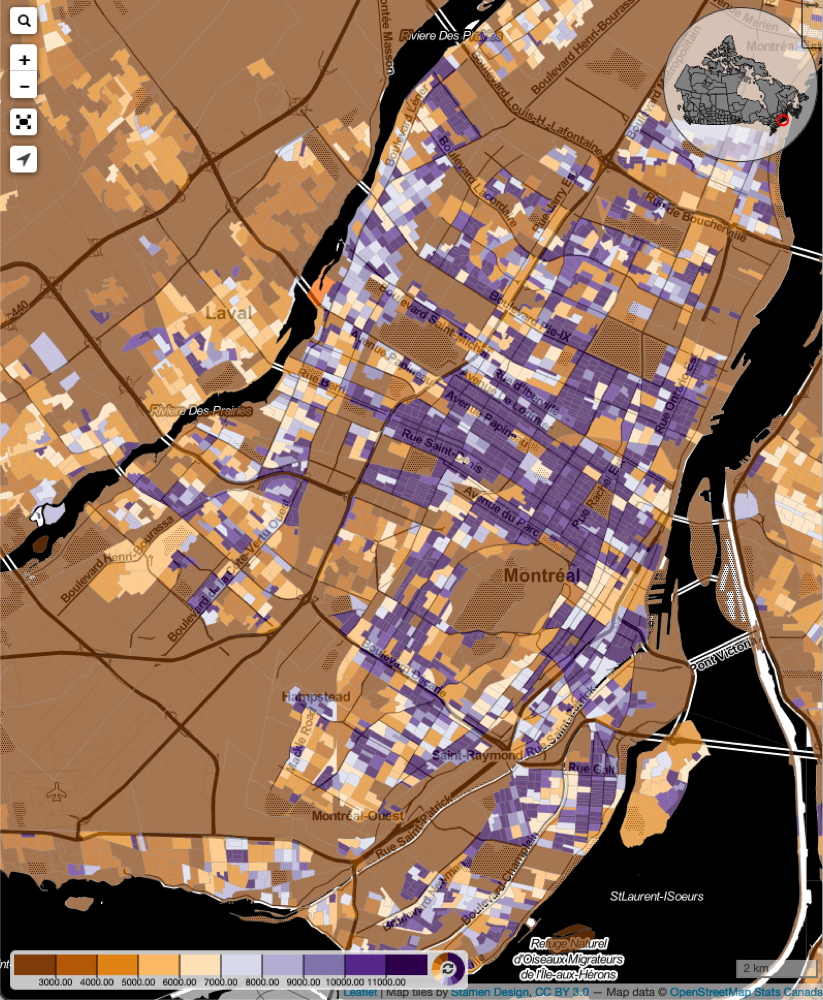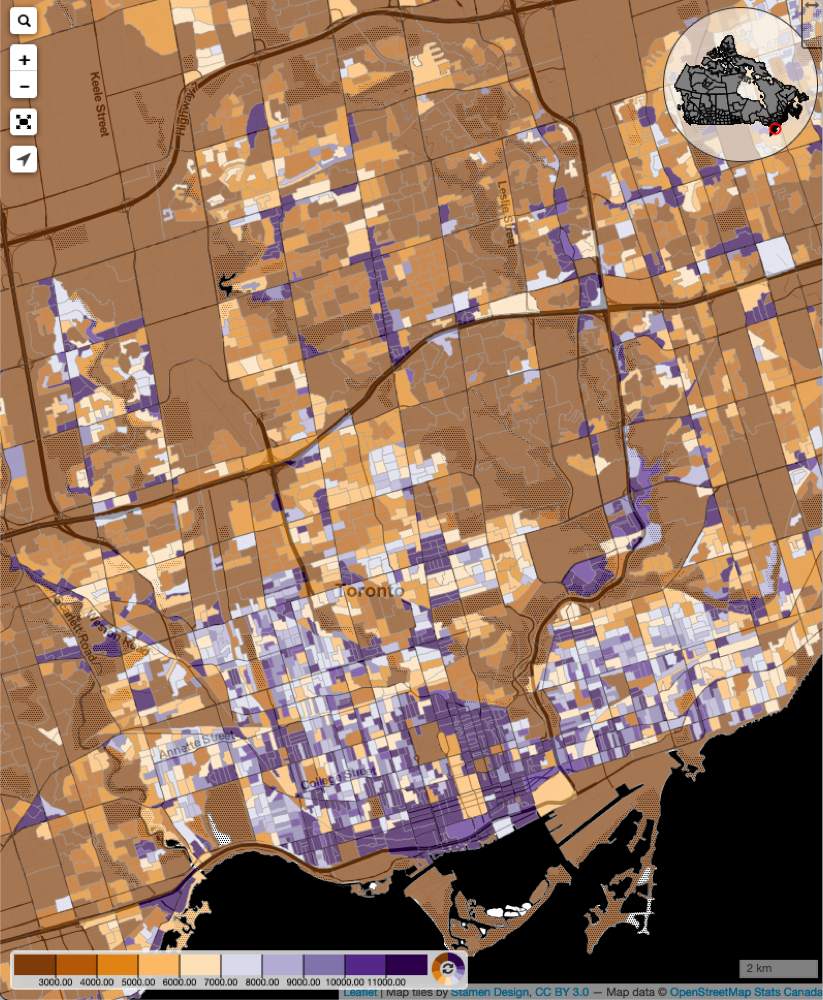Montreal is What North America Could Be
September 30, 2022
Montreal, Quebec is the second largest city in Canada after Toronto, and only about 5 hours away by car. Until last week, I had never been there. I am much more familiar with Toronto, having grown up nearby in Hamilton. I now live in Waterloo, Ontario, also close to Toronto – about 100km to the West. Toronto, Hamilton and Waterloo actually share a lot of similarities in their built forms (at different scales) that are recognizable across a lot of North America. They are dominated by detached homes, often set back from the road by lawns. Multi-family housing is generally confined to the downtown, and mainly comes in the form of high-rise towers. Toronto is a large city, but I am always amazed at how suburban the metropolis is. Sure, the downtown core is stocked with very, very tall skyscrapers. But venture just a little bit outwards and you’re more likely to find single-family detached homes than anything else. Take a look at this Google streetview photo:
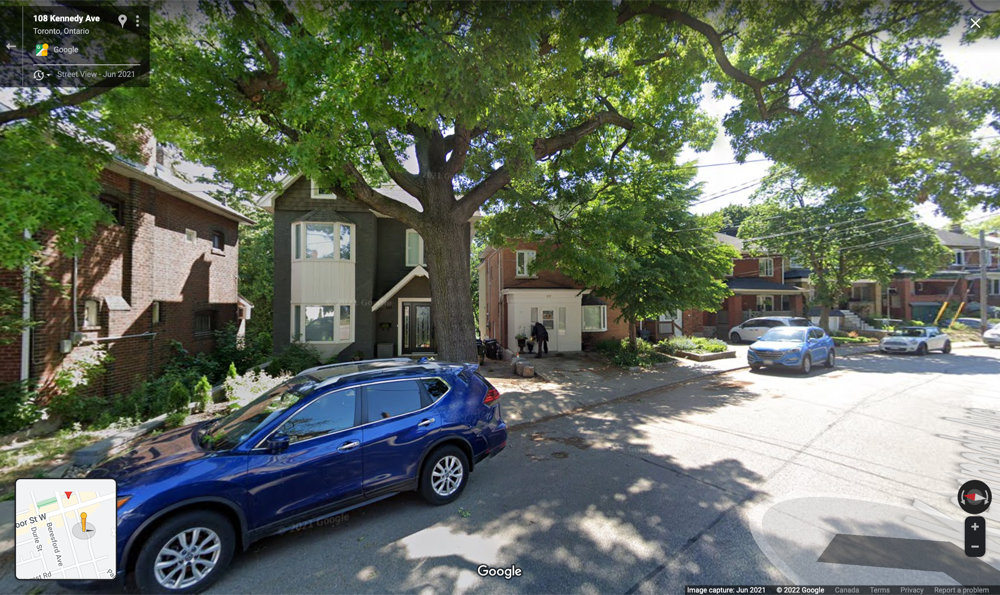
A street directly beside the Runnymede subway station in Toronto. Some of these homes are duplexes; many of them are not.
This street is a two minute’s walk to a subway station on the Bloor street line. The entire neighbourhood surrounding this station (and many other Toronto subway stations) is essentially suburban in form. You can imagine that many people would like to live close to a subway line in Toronto, but our zoning laws ensure that only relatively few can. I don’t want to spend too much time pointing out the flaws in Toronto’s urban design, but I think this kind of underuse of infrastructure – underuse which is frozen in place by our zoning code – emphasizes how the fetish for suburban homes has a cultural stranglehold on us in English Canada.
The built environment of Montreal
Now, on to Montreal. My partner and I recently spent a week in Montreal for no particular reason except to visit some friends and see the city. She was working remotely, but I had the week off and plenty of time to explore. I chose cycling as my preferred way to get around, which was nice because it allowed me to cover a larger geographical area rather than being restricted to where I could walk from the neighbourhood we were staying in. I was really amazed, biking around, at the frequency at which my “missing middle” alarm bells rang.

Missing middle housing. Source
So much of Montreal looks like the middle of this infographic. Lots of it looks like the right end of the density gradient, and some of it looks like the left end. Here are some photos I took while biking around:

Corner store with apartments above

Low rise residences

A six-plex

A business on the ground floor, walk-ups above
Three stacked apartments
These photos are mostly from the more downtown areas of Montreal, but I ventured further out into the suburbs as well and found lots of similar development, albeit with more car infrastructure. Wider roads gave the neighbourhoods less of an intimate, urban feel, but it was still quite different compared to suburbs in the Greater Toronto Area.

New apartment buildings further out from downtown

View from a parking lot in suburban Montreal

A new low-rise building in suburban Montreal

More low-rise along an arterial road
As I explored, I became convinced that “missing middle” housing is the default in Montreal. This is true whether the neighbourhood is old or new, suburban or urban. Sure, I also saw single family detached homes:

Like this one.

And this mansion, with a nice Porsche parked out front.
But in general these were the exception, not the rule. I wanted to see whether my impression matched reality. Thanks to https://censusmapper.ca I was able to look at the predominant housing forms in Montreal and Toronto using Canadian census data. The following images show Montreal and Toronto from the same scale, coloured by the predominant housing type in each census area as of the 2016 census. Red areas feature predominantly single family detached homes (the legend mistakenly includes duplexes), the blue areas are predominantly duplexes, rowhouses, and lowrise apartments, and the green areas are predominantly highrises.
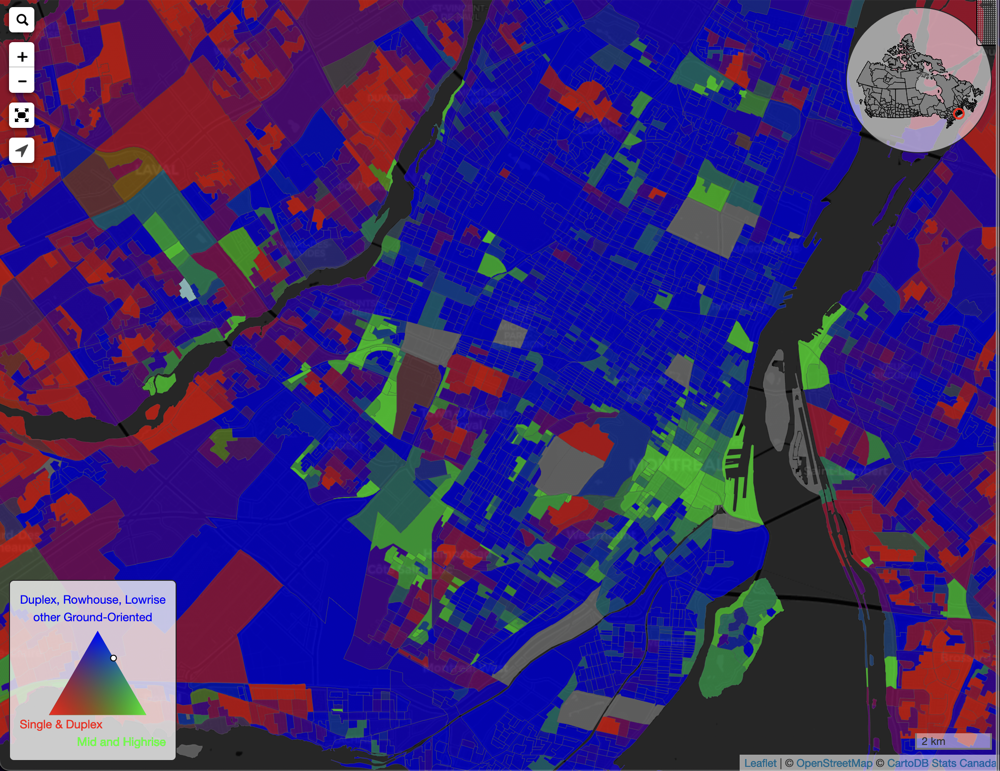
Montreal housing types
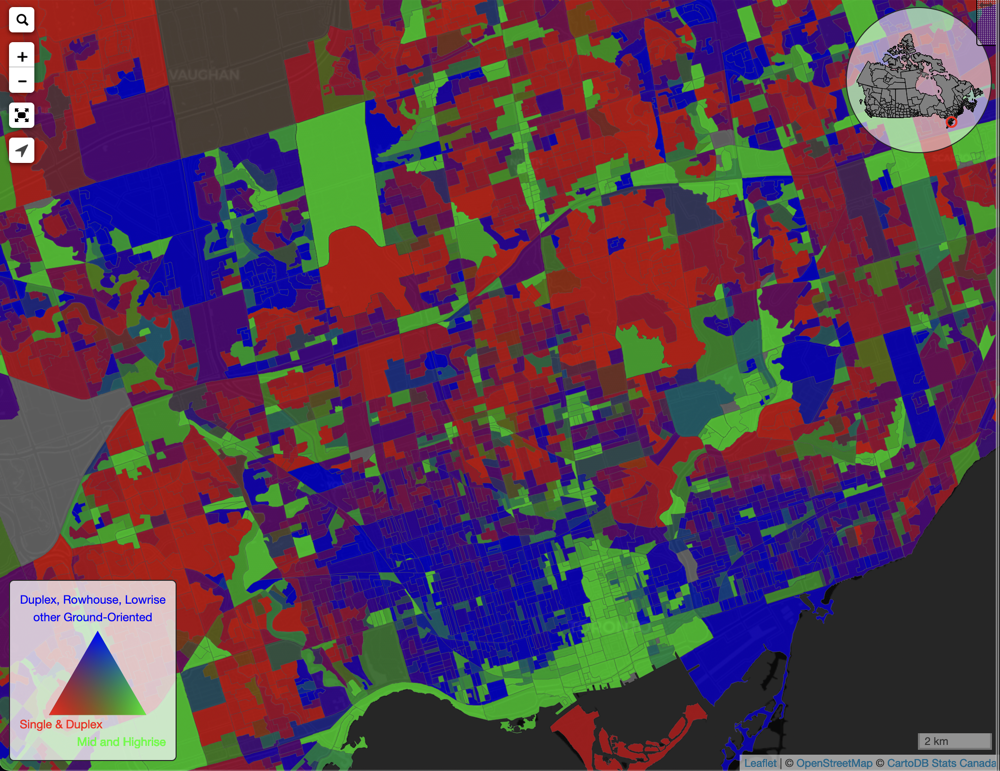
Toronto housing types
You can see that Toronto is more of a mixed bag than Montreal. The older, historic part of the city features lots of blue. The downtown is visible along lake Ontario as solid green, and the newer, more far flung parts of the city are a splotchy patchwork of red and green, with little missing middle. Montreal at the same scale is almost solid blue, with isolated patches of red and a few green areas. You can explore the maps yourself, here (Montreal) and here (Toronto). I also mapped both cities according to population density per square kilometre using 2021 Canadian census data:
The results are a little less obvious here. Both cities have large areas of low population density. I will admit that I did not venture off Montreal island into the surrounding communities. Still, the central part of Montreal has a larger area of purple hues (higher-density) compared to central Toronto. Montreal island is more consistently purplish, whereas Toronto's purple areas are restricted to the historic part of the city, and transit corridors.
Is Montreal Affordable?
One thing that always comes up in conversations with friends about Montreal is its affordability. Montreal has cheaper rent than other Canadian cities which are notoriously expensive – Toronto and Vancouver – but also mid-sized Canadian cities. Below are maps of Montreal and Toronto, using Canadian 2021 census data, of Median monthly shelter costs for rented dwellings in Canadian dollars.
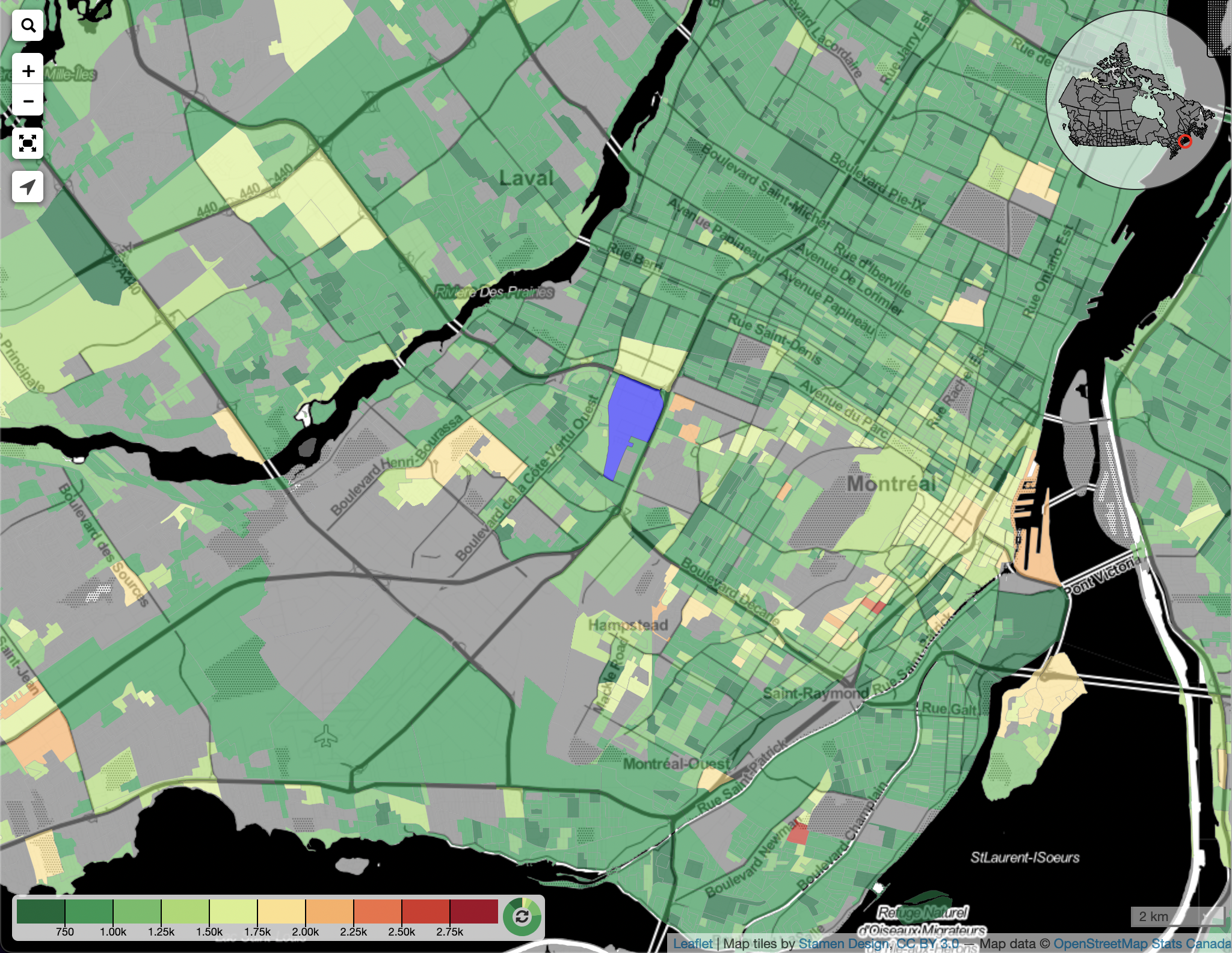
Median monthly shelter costs for rented dwellings in Montreal, CAD. Source
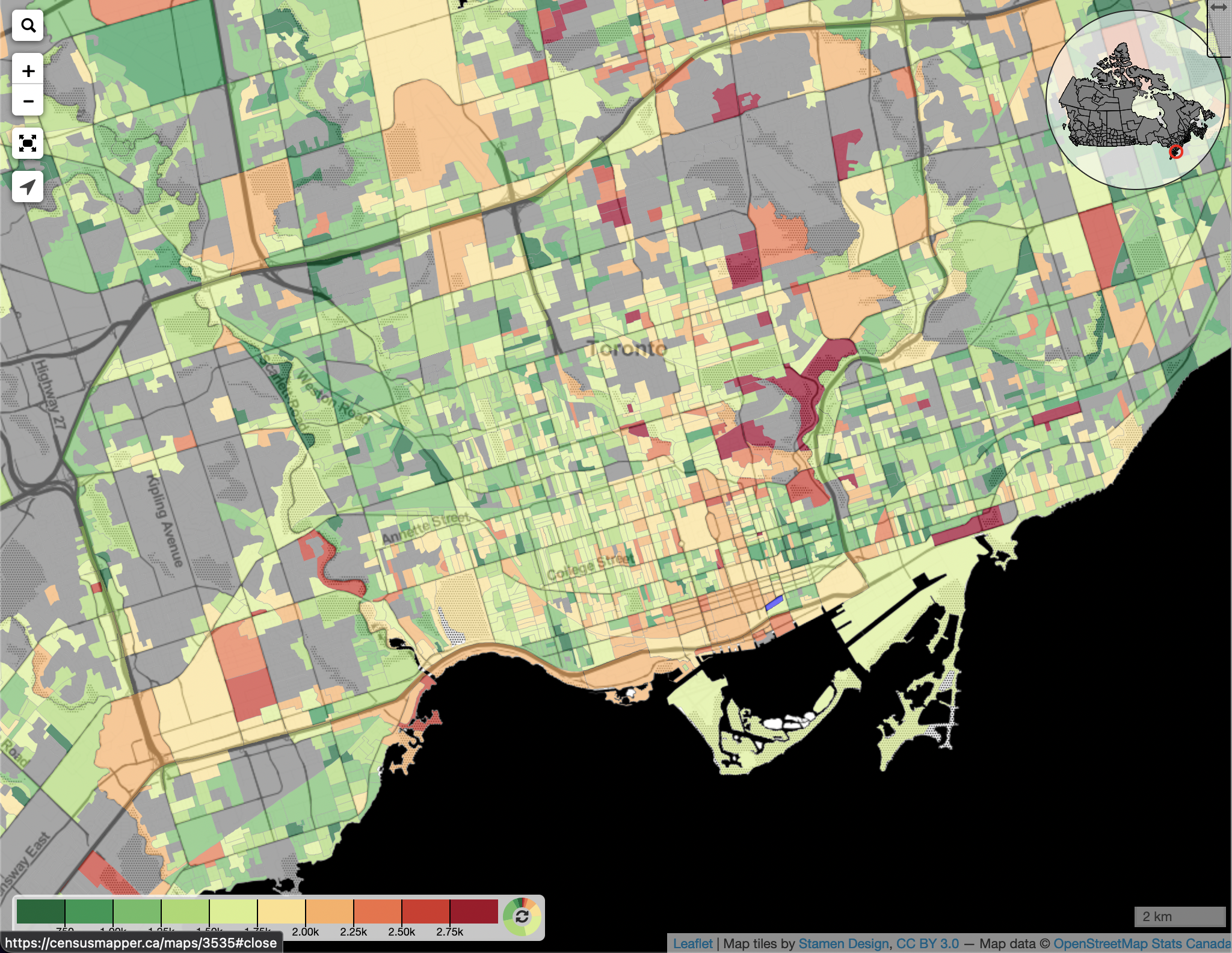
Median monthly shelter costs for rented dwellings in Toronto, CAD. Source
Montrealers clearly spend much less on rent than Torontonians. Here's the same data as a distribution graph, with Montreal compared to Waterloo.
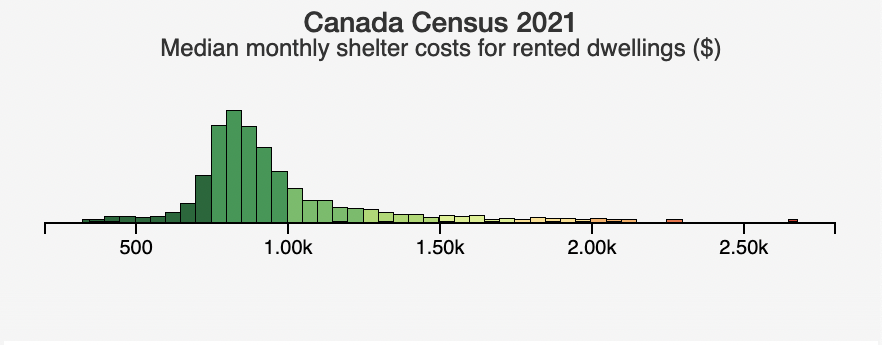
Median monthly shelter costs for rented dwellings in Montreal, CAD.
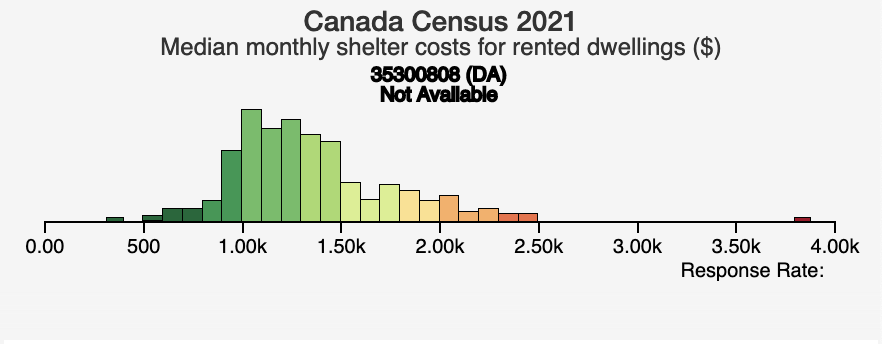
Median monthly shelter costs for rented dwellings in Waterloo, CAD.
Keep in mind Waterloo is a city of less than 115,000 people! Comparing home prices is a little harder, apples-to-apples, because of the different housing types predominant in Montreal vs. other cities, but Remax claims that Waterloo single-family homes averaged over $900,000 as of March 2022, and the Financial Post wrote in May of 2022 that single-family homes in Montreal averaged $576,000. Wowza claims that single-family homes in Toronto averaged $1.38M in August 2022, a year-over-year decrease. This tracks to my subjective experience. I chatted with someone around my age who mentioned that they had recently purchased a home in Montreal for $300K. Finding a home at this price would be a miracle in Waterloo these days!
Why land use matters
When I talked to Montrealers about housing costs, they were quick to point out that it is not as cheap to live there as it once was, but agreed that it is still cheap compared to other Canadian cities. When I asked them why they thought Montreal has a better housing market, they mentioned that the French language has acted as a barrier to the economy, in turn limiting population growth. This was more true before the COVID-19 pandemic and the remote-work economy; however most jobs based in Quebec require one to speak French, so it seems plausible still. Yet I think this only tells part of the story. Montreal’s population has been growing, if not quite as fast as Toronto’s:
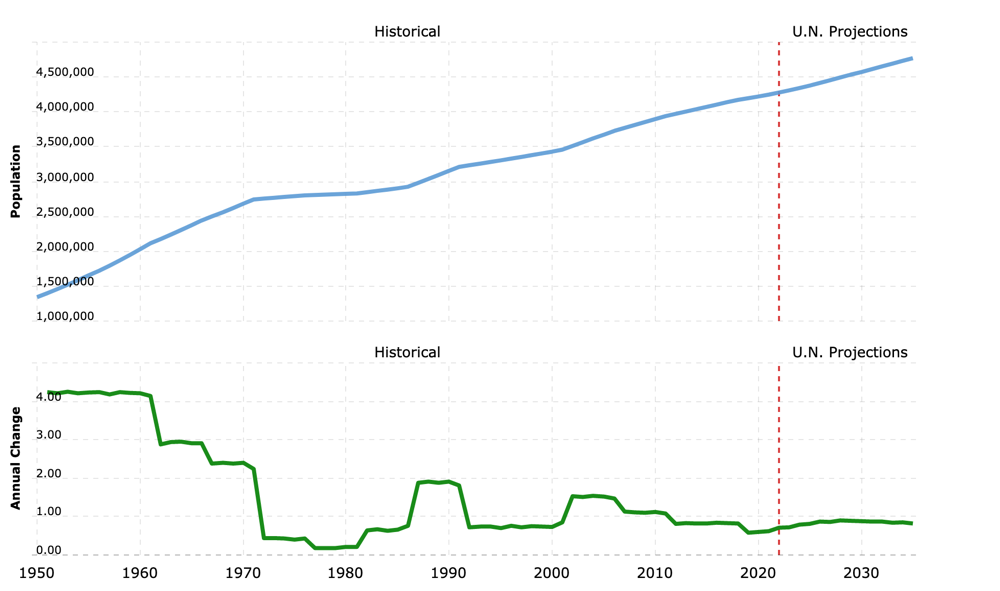
Montreal population over time & annual growth percentage. Source
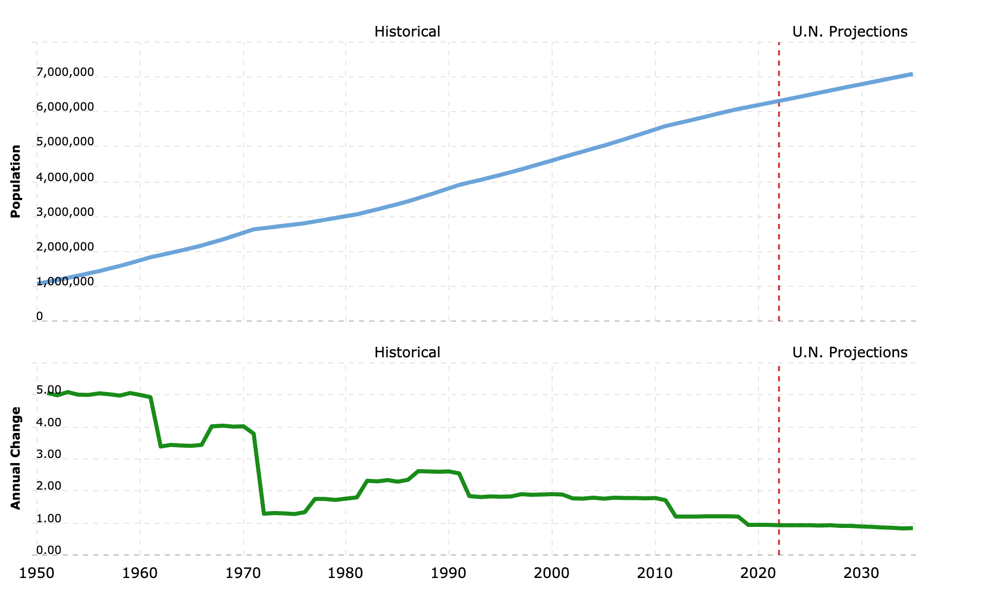
Toronto population over time & annual growth percentage. Source
These growth charts look fairly similar (though note that the y-axis' are not exactly the same). I believe that the way Montreal builds housing is the main cause of its relative affordability. But affordability aside, letting more people live in urban areas where they can be close to where they work, close to grocery stores, etc. just seems good. Doesn’t this:




Look so much more livable than this?
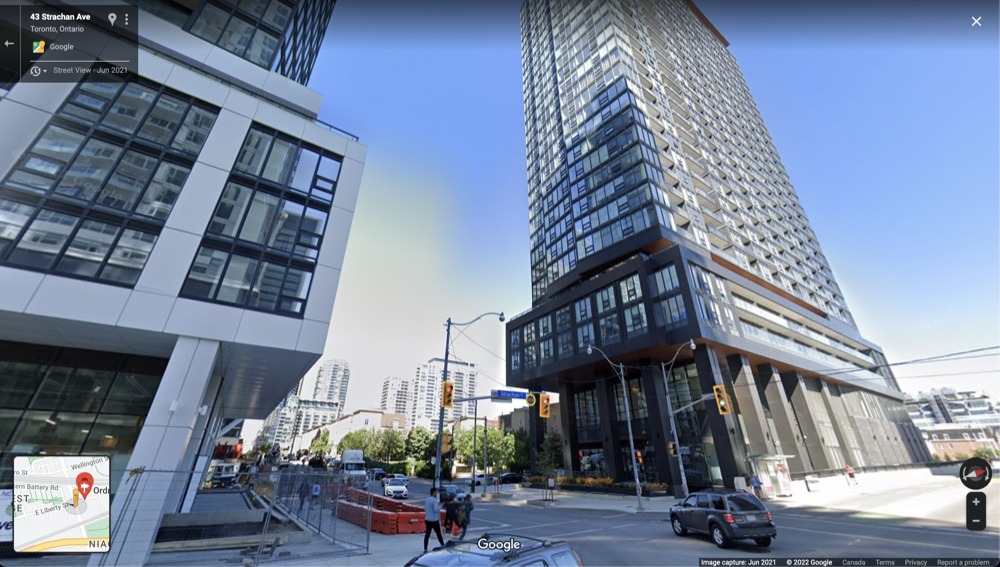
Liberty Village, Toronto
Or this?
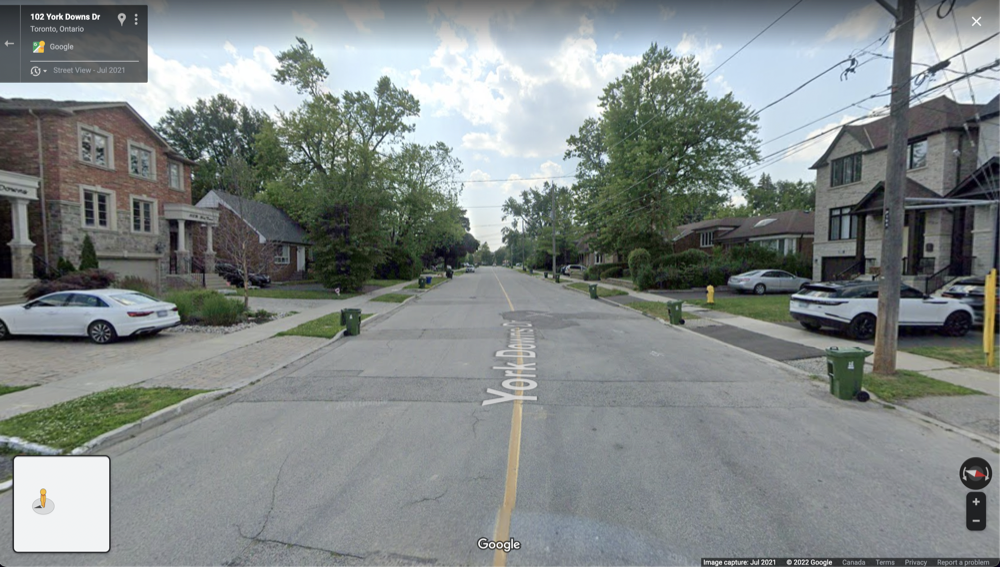
North York, Toronto
Don’t get me wrong, I think highrise condos and single family detached homes have their place. Lots of people want a large home with a lawn. But more than anything people want an affordable place to live, close to their work, their family, friends, etc. There's a reason the realtor's motto is location, location, location. It would be nice if detached homes and condo towers weren’t essentially the only two housing options in most of North America. It would be nice if more people could live where they want to live. I imagine that if people were given the option to live in the kinds of communities that I found in Montreal, many – not all, of course! – would.

Older and newer midrises side by side. The apartment building on the right looks like it was built in the 70s.

An old church converted to apartments in the Mont-Royal neighbourhood
I didn’t come to Montreal as a blank slate. I had already formed opinions on the merits of mixed-use, walkable neighbourhoods, density, etc before my visit. But seeing this pattern of development in the real world, experiencing how nice it is, how functional and how affordable, was vindicating. Above all, it showed me that beautiful, lively neighbourhoods don’t have to be for rich people only. I think that people tend to associate walkable, treed neighbourhoods with high rents. In North America, they are usually right. What I saw in Montreal, whether this was caused by the development pattern or not, is that all kinds of people can and do live in these sorts of neighbourhoods. I would love for that to be true for other cities too.
PS, a quick note on transit
This article isn't really about transit, and what I'm about to say here has been expressed in better detail many other places. But another thing that I loved about Montreal was how easy it was for me to walk, bike, or take transit to where I needed to go. Montreal has some of the best bike infrastructure in Canada, and this was a large part of the comfort I felt cycling around there, but in my opinion there is another, more important factor. This may sound obvious, but cycling in Montreal is so good because places you want to go are generally within biking distance. The larger the footprint of a city is, the longer it will take to get around; but a travel distance that is slightly more inconvenient in a car might be prohibitive on a bicycle. This is doubly true for walking, and even transit is worse where density is lower, because connections and stops add up and can make trips significantly longer.
While you're here, here are some more pictures I took of the city of Montreal:

Newer apartments in the Montreal suburbs

A crane punctures the skyline of downtown Montreal
New apartments lining a bike path along the St. Lawrence river

A commercial street in the Plateau neighbourhood.
Humble apartments bookend a two-lane street. Nothing special, architecturally, but there are a lot of homes in this photo at a scale which feels approachable.

